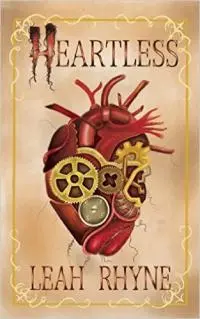Oh, Happy Days. How I loved you when I was young. But remember that time you felt like you needed to jazz things up, improve your ratings with a wild and crazy stunt? So you had the Fonz don his leather jacket and too-short swim trunks, water skis and a life-preserver belt? And you made him - quite literally - jump over a bit of ocean in which a white shark - reminiscent of Jaws, released two years before - circled round and round and round. Menacing. Threatening.
Remember the girls in bikinis, watching from a pier? Remember how Richie Howard (Opie Taylor!) drove the boat, turning to see Fonzie's final thumbs up before he took the jump that was meant to save the show?
Oh, Happy Days. How you jumped the shark.
There. Did you know that's where the phrase, "jump the shark," came from? From that single, terribly campy and ridiculous episode of Happy Days? And did you know it's become such a common expression that we all use it now to sum up the part of a movie, TV series, or novel that takes a turn for the ludicrous?
So. We've all (possibly) done it in our own work, letting a story move in a direction that makes absolutely no sense, or is gimmicky simply for the sake of being, well, gimmicky.
But what do you do when it's not a story you can throw away, leave up on that shelf never to be seen again? What do you do when it's (gulp) for a novel already under contract? What then? How can you save your story, your series, yourself, from certain doom and destruction?
How'd I Jump the Shark?
In my first YA novel, Heartless, I began with a trope already well-established in literature. I took a girl, a human, and turned her into a Frankenstein-esque monster. Part machine, part flesh and blood, one hundred percent disaster area. This was outlandish enough, but I worked hard to keep my my monster-girl well-grounded in reality.
I maybe succeeded. I maybe did a good enough job of telling a fun tale without too many gimmicks.
I was excited to begin work on the sequel to Heartless. Called Shapeless, it follows our heroes into a world filled with hackers and digitized humans, a world with zombie-monster-robots and all kinds of other wild plot points.
As I wrote it, I had fun. I added and added and added some more, each creature and situation more wild than the last. I'd laugh, filled with glee, as I wrote (which maybe makes me sound like a mad scientist, but who cares, right? I have one of those in my story as well). Less wasn't more. Not in this novel. Oh no. As I wrote Shapeless, I firmly believed: more was more was more was awesome. I typed with abandon, filling page after page with insanity, assuming that, in the end, it would all come together and make sense.
Only one problem: it didn't. On my first read-through, I discovered (rather predictably, when I stopped and considered) that my story...had jumped the shark. Big time. Gimmicks and hacks, outlandish and ludicrous situations. If I didn't buy it, on that first read-through, how could I expect my readers to support these crazy turns of tale?
I knew in a moment: I could never hand this to my publisher. Not like that. Nope. Not ever.
So what could I do to bring it back together? Could I succeed?
Here's my best advice, as gleaned from an editorial work-in-progress that is stretching across the space-time continuum.
Step 1: Don't panic
You guys. This is so normal. So many stories have taken crazy turns as they've gone on. So many books are released with moments that echo the Fonz and his water skis. (The best example, in my mind, is Mockingjay. The scenes through the heart of the Capitol, with the pods and the monsters and the creatures? Total shark-jumping.)
 The trick, when you've messed up your story, is to recognize what you've done, and don't freak out.
The trick, when you've messed up your story, is to recognize what you've done, and don't freak out.
This was hard for me. Honestly, I was and still am madly in love with parts of Shapeless. Some parts are chock full of my best, most imaginative writing to date. But reading the bits that went wrong made me, at times, want nothing more than to throw the whole thing — and my computer, and my brain, and even, sometimes, my dogs, since they're always around when I'm writing — out the goddamn window. I wanted to cry. To rage. To punch my punching bag so hard my knuckles would bleed.
But that's not productive, is it?
So when I'd get frustrated, I'd go for a run. I'd pet — not throw out — my dogs. I'd remind myself that I'm here for a reason. I'm writing for a reason. I love what I do, even when it goes terribly wrong.
In short, I refused to fall apart. I refused to panic.
Huh. This is good life advice too, no?
Step 2: Keep calm, edit on, and buy a binder
Typically, my editorial process is such: write a book, edit it on the computer, edit it again on the computer, send it out to betas for feedback, edit on the computer one more time, then do a final edit on paper. It's a lot of editing, yes, and by the end I can practically recite the entire book. This process takes months, and can include breaks to work on other stories, but that first edit is always the most painful. I don't know the characters as well as I'd like, and I don't remember chains of events as clearly as I really should.
Facing a story that needed a complete overhaul, then, presented some unusual challenges for me. I knew the book needed massive additions, and probably massive deletions. I'd need to track all that somehow, and I'd need to remember what I changed, without having to keep multiple versions of the same file open on my poor little laptop. I don't use Scrivener or any of the programs where you can move chapters around easily; I use Word. It's a time-honored tradition for me, and for the most part it works. But I knew it wouldn't this time.
To fix this story, I needed to change my entire process. Rather than wait until Edit 4 or 5 to print the whole thing, I went ahead and did it right away. And rather than keeping the manuscript in a sloppy pile that gets messed up, mixed up, subject to the whims of wind, dogs, and an eight-year-old child, I did something drastic: I bought a binder, and a ream of lined, looseleaf paper.
The manuscript has found new life in my binder. Entire pages are scribbled out, with notes like "Oh, God, Leah, what were you thinking?" scrawled in the margins. Other pages are covered with circles and arrows, shifting paragraph locations and altering wording with so much detail I think no word will remain unchanged by the end of this first edit. That...never happens to me. My first edit is usually pretty light.
Entire chapters have been added, written in long-hand, my mish-mashed cursive-print that probably no one in the world but me can read. There are post-its marking pages where important events happen so I can refer to them easily. There are notes in the front of the binder, detailing characters' full names and physical descriptions, to which I can easily flip when I forget what Lucy's middle name might be and which I suddenly need to know.
I've even pulled out entire chapters and moved them to a different location in the binder.
There's something weirdly cathartic about this process, this manual shifting and scribbling and scrawling. It's like putting together a puzzle. Maybe I don't have the full picture of what it will look like in the end, but with each change in location, my final destination becomes more clear. Someday, soon, it'll all make sense.
Part 3: 42...or something
"42" may be the meaning of life...or it may just be the number of weeks or months (or, God forbid, years) it's taking me to edit this book! Oy! It's slow going! Sometimes, with all the changes I make, I am only able to edit half a chapter in a single day. Often, I can only do a page or two in one sitting. It's hard, seeing all the cross-outs and scribble-scrabble. It's disheartening because I feel like a failure in some way, writing such awful prose I can't even stand it.
But it's effective. I can't deny that. The bits that are lost are lost for good reason; the bits that are added are better because they're written slowly, carefully. Writing longhand takes me a hell of a lot longer than typing. I used to be a secretary, after all. My typing skills are darn impressive. So forcing myself to slow down and consider each word has been a new, and enlightening, experience. To say the least.
So it may be that the best advice for anyone facing a major book overhaul is really to slow down. Take your time. Think things through. I've always been a vomit-on-page writer and a contemplative editor. I think about changes before I do them, often on long runs before an editing session. Sometimes I wonder if I'm not too cerebral about editing (and life, but whatevs).
But in this case, being slow and contemplative may be the only way to save a manuscript. I hope. What I do know is I'm already far more proud of this story than I was three months ago, and I'm getting excited to share it with my publisher.
Hopefully that'll hold, but no matter what, I'm taking my time. My book, my series, my story is worth it.

About the author
Leah Rhyne is a Jersey girl who's lived in the South so long she's lost her accent...but never her attitude. After spending most of her childhood watching movies like Star Wars, Aliens, and A Nightmare On Elm Street, and reading books like Stephen King's The Shining or It, Leah now writes horror and science-fiction. She lives with her husband, daughter, and a small menagerie of pets.








